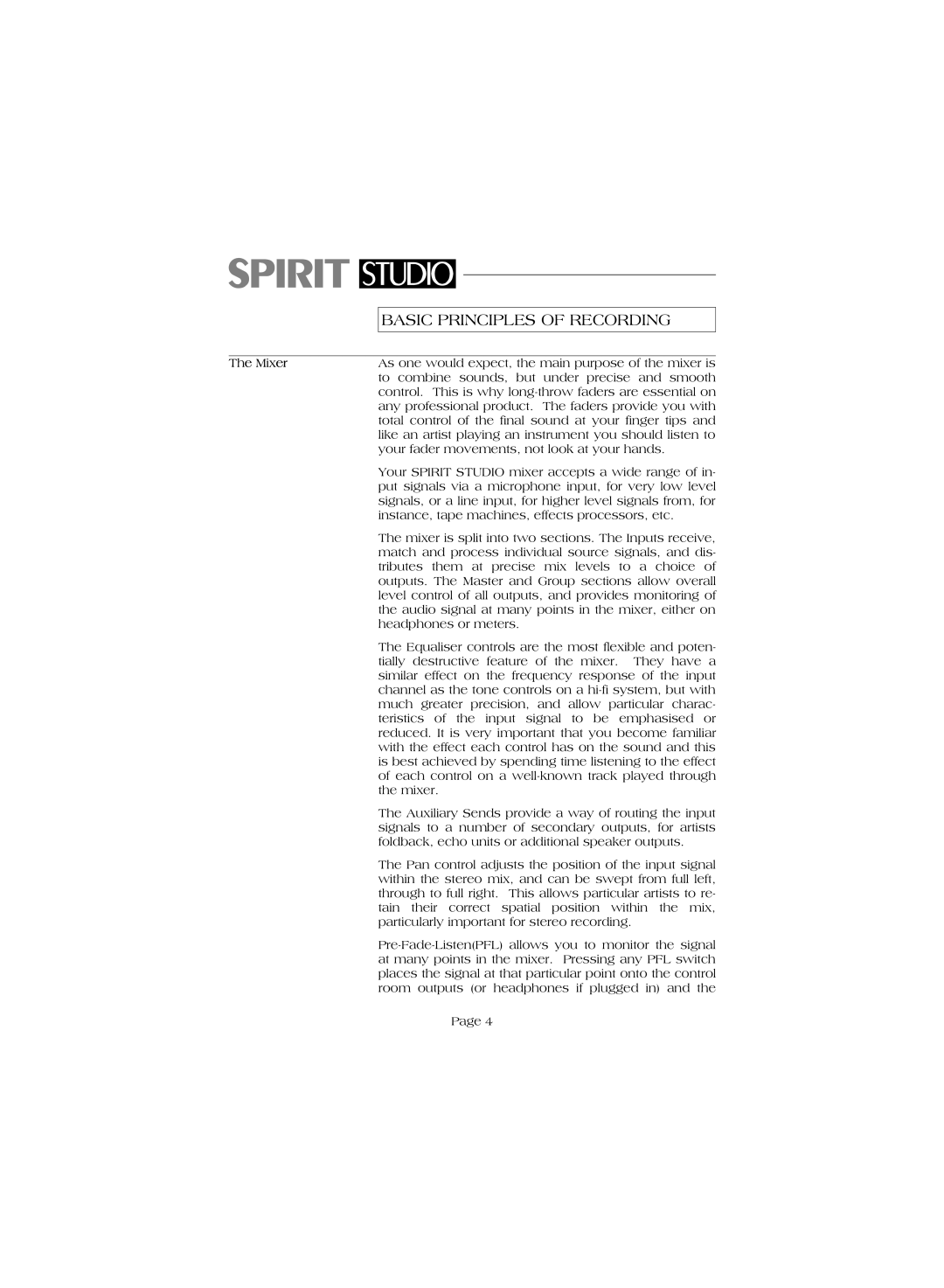| BASIC PRINCIPLES OF RECORDING |
|
|
|
|
The Mixer | As one would expect, the main purpose of the mixer is |
| to combine sounds, but under precise and smooth |
| control. This is why |
| any professional product. The faders provide you with |
| total control of the final sound at your finger tips and |
| like an artist playing an instrument you should listen to |
| your fader movements, not look at your hands. |
| Your SPIRIT STUDIO mixer accepts a wide range of in- |
| put signals via a microphone input, for very low level |
| signals, or a line input, for higher level signals from, for |
| instance, tape machines, effects processors, etc. |
| The mixer is split into two sections. The Inputs receive, |
| match and process individual source signals, and dis- |
| tributes them at precise mix levels to a choice of |
| outputs. The Master and Group sections allow overall |
| level control of all outputs, and provides monitoring of |
| the audio signal at many points in the mixer, either on |
| headphones or meters. |
| The Equaliser controls are the most flexible and poten- |
| tially destructive feature of the mixer. They have a |
| similar effect on the frequency response of the input |
| channel as the tone controls on a |
| much greater precision, and allow particular charac- |
| teristics of the input signal to be emphasised or |
| reduced. It is very important that you become familiar |
| with the effect each control has on the sound and this |
| is best achieved by spending time listening to the effect |
| of each control on a |
| the mixer. |
| The Auxiliary Sends provide a way of routing the input |
| signals to a number of secondary outputs, for artists |
| foldback, echo units or additional speaker outputs. |
| The Pan control adjusts the position of the input signal |
| within the stereo mix, and can be swept from full left, |
| through to full right. This allows particular artists to re- |
| tain their correct spatial position within the mix, |
| particularly important for stereo recording. |
| |
| at many points in the mixer. Pressing any PFL switch |
| places the signal at that particular point onto the control |
| room outputs (or headphones if plugged in) and the |
Page 4
